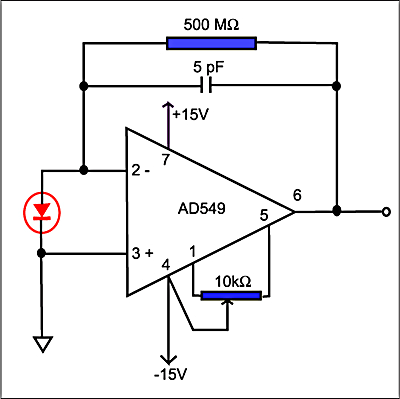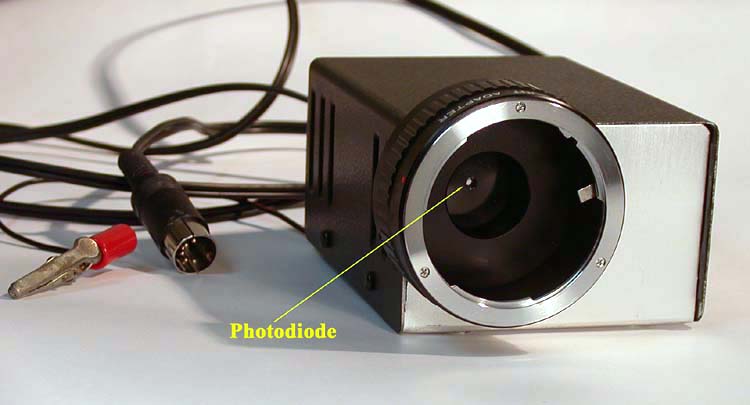Photometer description.
|
|
The light sensitive element of the microscope photometer is a Centronic silicon photodiode (OSD5.8-7Q) with a wavelength range from 200 nm to 1100 nm and an area of 5.8 mm▓. The dark current of the diode being very low (currently 3 pA), the integrated amplifier used to monitor the very low current level of the diode should have a ultralow bias current. The model finally selected is an Analog Devices AD549 with bias current typical of 60 f A. The circuit is a current to voltage converter with a high gain resistor (500 to 1000 MW). The offset voltage can be adjusted with the 10kW potentiometer. The amplifier must be located close to the photodiode in a well shielded case. The power supply for the amplifier IC is external to reduce noise. The output of the amplifier is connected to an Escort model 345A digital voltmeter with 1 ÁV resolution and RS232 interface for computer data storage. |
|
|
To position the photo detector in the photographic tube of my Olympus BX40 microscope, I have used the Olympus OP C-mount adapter which is fixed at the top of the tube with an OM bayonet. The diode is glued to a C-Mount plastic cap with a small hole drilled at its center. When attached to the microscope, the C-Mount plastic cap is located in the image plane of the photo eyepiece so that the light coming from a small crystal located at the center of the microscope stage can reach the diode. The figure shows the C-mount adapter with its plastic cap equipped with the photodiode and a preamplifier (here a previous model with Burr-Brown OPA 129 IC) |
|
|
|
The finished photometer is shown above with the small photodiode behind the hole in the cap. The unit can be easily mounted at the place of a reflex camera on the microscope photo tube. |


